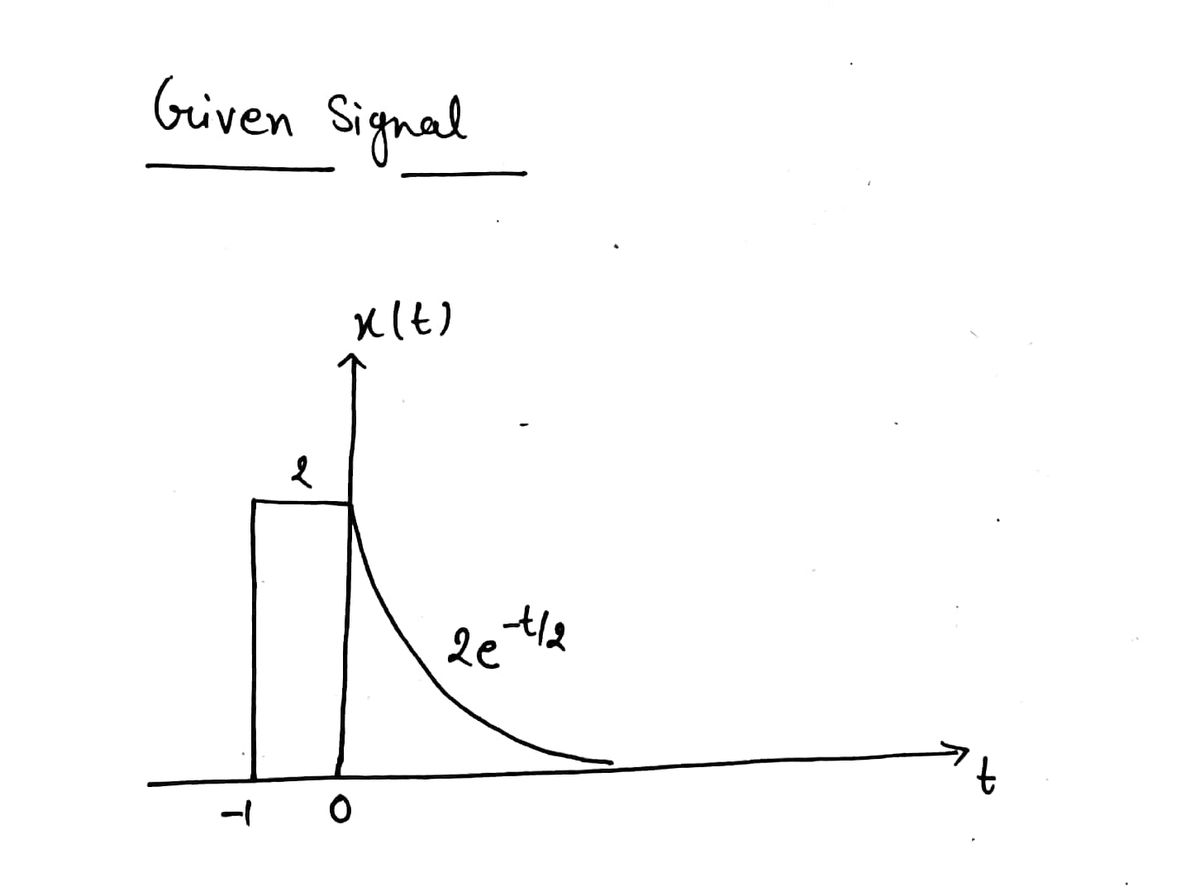For the signal given below, check whether it is a power signal or an energy signal or neither. X(t) 2 -1 0 2e-¹/2
For the signal given below, check whether it is a power signal or an energy signal or neither. X(t) 2 -1 0 2e-¹/2
Introductory Circuit Analysis (13th Edition)
13th Edition
ISBN:9780133923605
Author:Robert L. Boylestad
Publisher:Robert L. Boylestad
Chapter1: Introduction
Section: Chapter Questions
Problem 1P: Visit your local library (at school or home) and describe the extent to which it provides literature...
Related questions
Question
Signal analysi

Transcribed Image Text:**Educational Topic: Signal Analysis**
**Title: Signal Classification: Power Signal vs. Energy Signal**
**Content:**
In this educational segment, we will analyze the given signal to determine whether it is a power signal, an energy signal, or neither.
**Signal Description:**
The plotted signal, \(X(t)\), is defined on the time-axis \(t\). It consists of two parts:
1. A rectangular pulse of height 2, spanning from \(t = -1\) to \(t = 0\).
2. An exponentially decaying curve defined by \(2e^{-t/2}\) for \(t \geq 0\).
**Diagram Explanation:**
- The rectangular pulse is displayed as a vertical bar from \(-1\) to \(0\) on the \(t\)-axis, with a constant amplitude of 2.
- Starting from \(t = 0\), the exponential curve begins, decreasing towards zero as \(t\) increases. It demonstrates an exponential decay characteristic determined by the function \(2e^{-t/2}\).
**Task at Hand:**
To classify the signal, follow these steps:
1. **Energy Signal Check:** Evaluate the total energy \(E = \int_{-\infty}^{\infty} |X(t)|^2 \, dt\). If this integral is finite and non-zero, the signal is an energy signal.
2. **Power Signal Check:** Calculate the average power \(P = \lim_{T \to \infty} \frac{1}{2T} \int_{-T}^{T} |X(t)|^2 \, dt\). If this evaluates to a finite positive value, the signal is a power signal.
3. **Neither:** If neither the energy nor the power criteria are satisfied, the signal is classified as neither.
In the next section, we will demonstrate the mathematical evaluation of these criteria using the given signal.
Expert Solution
Step 1

Trending now
This is a popular solution!
Step by step
Solved in 2 steps with 2 images

Knowledge Booster
Learn more about
Need a deep-dive on the concept behind this application? Look no further. Learn more about this topic, electrical-engineering and related others by exploring similar questions and additional content below.Recommended textbooks for you

Introductory Circuit Analysis (13th Edition)
Electrical Engineering
ISBN:
9780133923605
Author:
Robert L. Boylestad
Publisher:
PEARSON

Delmar's Standard Textbook Of Electricity
Electrical Engineering
ISBN:
9781337900348
Author:
Stephen L. Herman
Publisher:
Cengage Learning

Programmable Logic Controllers
Electrical Engineering
ISBN:
9780073373843
Author:
Frank D. Petruzella
Publisher:
McGraw-Hill Education

Introductory Circuit Analysis (13th Edition)
Electrical Engineering
ISBN:
9780133923605
Author:
Robert L. Boylestad
Publisher:
PEARSON

Delmar's Standard Textbook Of Electricity
Electrical Engineering
ISBN:
9781337900348
Author:
Stephen L. Herman
Publisher:
Cengage Learning

Programmable Logic Controllers
Electrical Engineering
ISBN:
9780073373843
Author:
Frank D. Petruzella
Publisher:
McGraw-Hill Education

Fundamentals of Electric Circuits
Electrical Engineering
ISBN:
9780078028229
Author:
Charles K Alexander, Matthew Sadiku
Publisher:
McGraw-Hill Education

Electric Circuits. (11th Edition)
Electrical Engineering
ISBN:
9780134746968
Author:
James W. Nilsson, Susan Riedel
Publisher:
PEARSON

Engineering Electromagnetics
Electrical Engineering
ISBN:
9780078028151
Author:
Hayt, William H. (william Hart), Jr, BUCK, John A.
Publisher:
Mcgraw-hill Education,